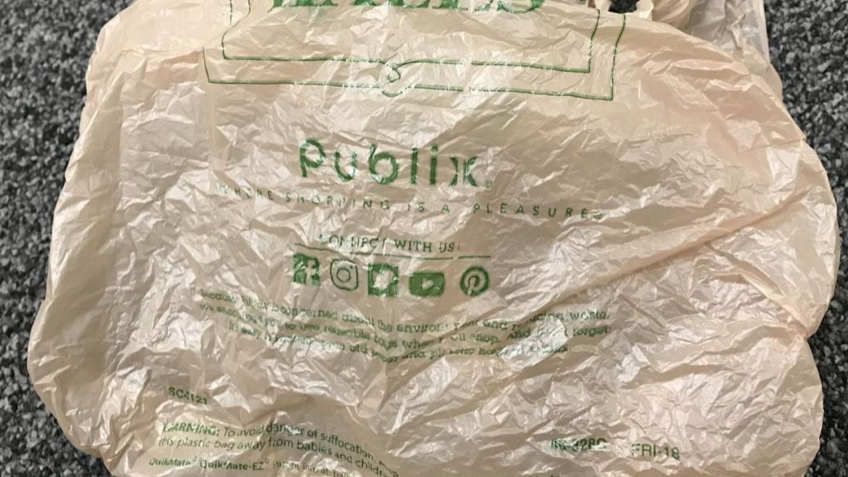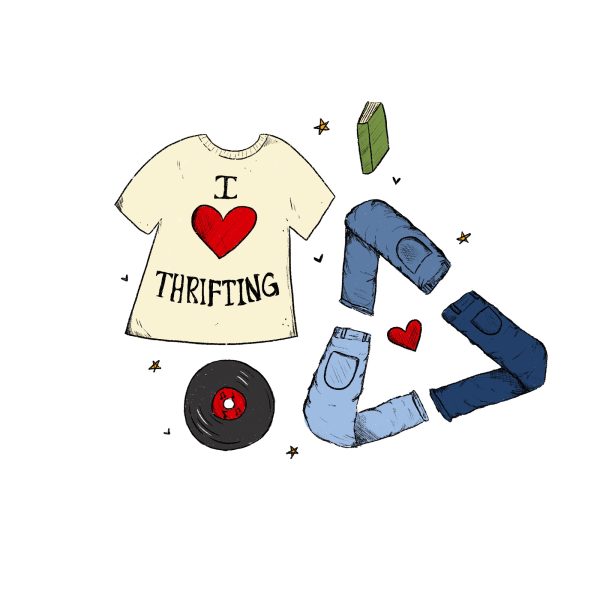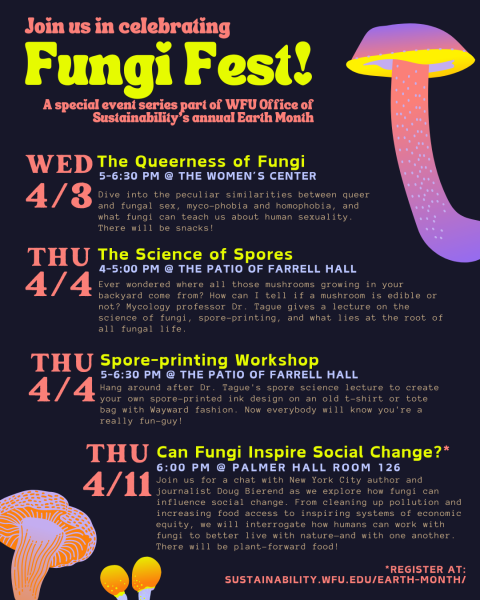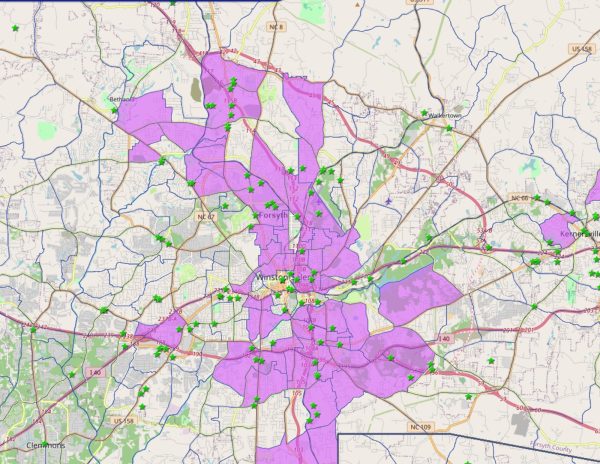How eco-friendly is your favorite Winston-Salem grocery store?
Examining the environmental practices and aims of grocery stores near campus
Despite efforts to decrease their impact on the planet, many grocery stores, like Publix, still use plastic bags.
January 13, 2023
At some point, the Pit’s fruit bar will no longer be enough to sustain my mid-afternoon snack cravings. Perhaps I’ve run out of food dollars from buying oat milk lattes at Camino Bakery every morning, or the P.O.D. is no longer a financially viable option. For many of us, these dilemmas are when we venture off-campus to a grocery store.
If one has access to a personal or kind friend’s vehicle, grocery options near Wake Forest are fairly abundant. While product offerings, location, personal preference and cost may be at the forefront of one’s mind when choosing between stores, there’s another aspect to consider — sustainability. As individuals, we can forego plastic bags, carpool to the store with friends and do our best to buy plant-based products, but the practices of the corporations from which we buy are just as important.
Before investigating the environmental track record of grocers near campus, it is important to acknowledge the privilege of having and choosing between several grocery stores nearby. As of 2018, there are 21 neighborhood food deserts in Winston-Salem, meaning that nearly 33% of Winston-Salem residents live more than a mile away from a large grocery store. Without a car, this radius severely limits residents’ access to affordable, high-quality food. Whether for residents in Winston-Salem or for us as college students, the cost of products is also a dominant factor in grocery shopping. The findings in this article are meant to be informative, not to pass judgment on personal shopping habits and behaviors. Many people may not have the ability to choose where to shop, but when possible, a company’s regard for the planet is vital to consider before shopping.
This article will discuss four nearby grocery stores: Publix, Whole Foods, Trader Joe’s and Target.
Publix
I’ll start with the average Floridian’s favorite ounce of nostalgia — Publix. While somewhat new to Winston-Salem — the Miller Street location opened in 2016 — its proximity to campus makes it, at least anecdotally, popular with students. According to its self-published 2022 sustainability report, Publix recycled 53.3% of storefront cardboard, plastic and paper in 2021. Every Publix store offers trash, paper and plastic recycling outside of the store for customer use. Additionally, the report boasts a 27.7% drop in carbon dioxide emissions per square foot since 2007, and 33 Publix stores, including the Miller Street location in Winston-Salem, offer charging stations for electric cars. When it comes to food waste, the report claims Publix diverted 28,000 tons of food waste from landfills by sending excess waste from dairy plants to farmers to use as livestock feed. Publix also donated 17 million pounds of bakery products to local organizations and $2 billion worth of food to Feeding America.
However, these numbers are self-reported, and it is unclear whether the donated food would have been wasted otherwise, or if the donations were new products. Publix still utilizes plastic bags unless customers request paper bags, and there is no discount for bringing reusable bags. The report focuses heavily on reducing plastic waste via recycling and individual consumer efforts but shows no real commitment to reduce single-use plastics used in their products and packaging.
Whole Foods
With its main schtick focused on health and organic foods, one would expect Whole Foods to appease its health-conscious consumer base by also emphasizing the health of our planet. Whole Foods’ food standards appear to provide organic, non-GMO, animal welfare standard-approved and generally sustainably-sourced products based on the information available on their website. Additionally, Whole Foods pledged to reduce its food waste by 50% between 2020 and 2030 through upcycling programs in stores and donations to local organizations. When it comes to energy, the company has more than 70 stores with solar energy panels, more than 20 stores with Leadership in Energy and Environmental Design (LEED) certifications and more than 200 electric car charging stations nationwide. It is also striving to reduce the emissions of hydrofluorocarbons (HFCs), which are greenhouse gases used in refrigeration. Additionally, Whole Foods stopped using single-use plastic bags in stores in 2008. While Whole Foods’ sustainability efforts are impressive, the actions of its parent company, Amazon, must also be considered. In 2021, Amazon emitted 71.54 million metric tons of carbon dioxide, a number that, if Amazon were a country, would rank them about 50th in the world in emissions.
Trader Joe’s
Trader Joe’s is a fan favorite amongst many students — equally for the aesthetic as much as for the products. When I shop at Trader Joe’s, I’m likely not there hunting down a pantry staple; instead, the chain focuses on creating a local, organic, farm-like feel in its stores through hand-painted wooden signs, small-sized stores and an evolving product line. The Trader Joe’s website includes a sustainability page that was updated at the end of 2022. According to that site, 23% of the company’s products are organic, all are GMO-free and 12 million pounds of plastic have been removed from product packaging in “the last few years.” Additionally, Trader Joe’s claims to donate almost 100% of unsold food to local organizations. Emphasis is also placed on recycling, composting and energy efficiency efforts, but only raw numbers — not percentages — are offered on the website, making it difficult to tell the significance of the company’s claims. Trader Joe’s encourages customers to bring reusable bags and sells their own, but no discount is offered for doing so, and the company continues using both plastic (which are made from recycled plastic and designed to be reused up to 125 times) and paper bags in their stores.
Target
Located off University Parkway (or near Hanes Mall, for the adventurous), Target is a fan favorite among students. In the company’s annual Environmental, Social and Governance Report, the Target Forward plan is presented as the company’s primary sustainability strategy. Target Forward’s main goal aims to reach net zero emissions as a company by 2040. While this goal is both ambitious and appeasing to the average customer, one only has to walk into Target to see how difficult this proposition is. Plastic bags are still used by the majority of Target customers I’ve observed at the University Parkway location, although a $0.05 discount is offered to customers for every reusable bag used. Additionally, the vast majority of Target products are packaged or otherwise contain single-use plastic. The report claims that 80.8% of Target’s operational waste in 2021 was diverted from landfills. The report includes Target Zero, a recently-launched program that strives to help customers locate sustainably packaged products within their stores. Target has recently opened a net zero store and has committed to reducing HFCs used in refrigeration.
While none of these stores maintain the perfect sustainability practice, this article aimed to examine the variance in each grocery store’s care and commitment to environmentalism. Regardless of where one shops, readers are encouraged to research and make eco-friendly decisions like using reusable bags and avoiding excessive plastic waste when shopping.





















